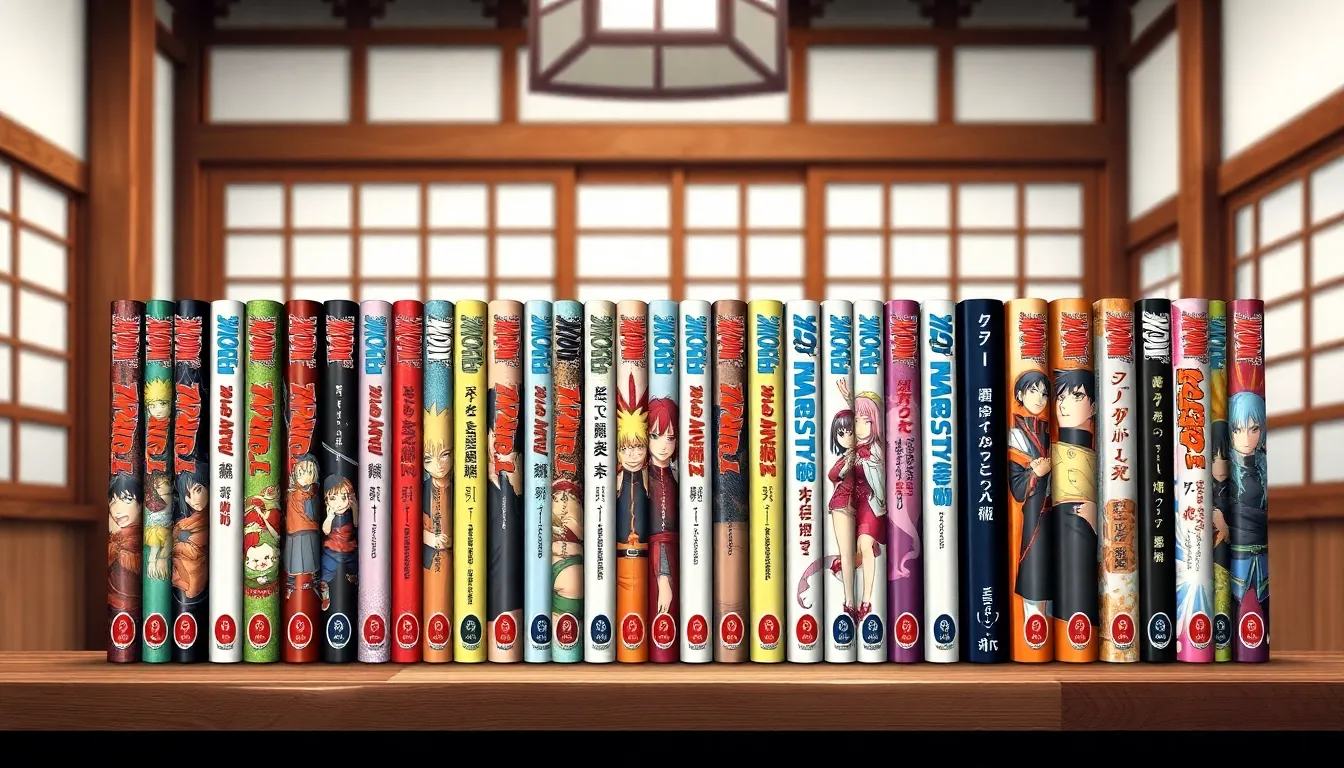For fans of ninjas and epic battles, the world of Naruto is nothing short of legendary. But amidst the jutsu and heartwarming friendships, one burning question remains: just how many Naruto manga books are there? Spoiler alert: it’s a lot!
How Many Naruto Manga Books Are There
The Naruto manga series spans 72 volumes, published between 1999 and 2014. Masashi Kishimoto created this iconic series, captivating readers with its rich storytelling and character development. Each volume typically contains several chapters that follow the journey of Naruto Uzumaki, a young ninja with dreams of becoming Hokage.
In total, the series comprises 700 chapters. These chapters detail Naruto’s growth, friendships, and struggles against various antagonists. Alongside Naruto, key characters include Sasuke Uchiha and Sakura Haruno, each contributing to the series’ depth and intrigue.
The manga’s success derived from its compelling themes of perseverance and friendship. Critical acclaim accompanied its popularity, making it one of the best-selling manga series worldwide. Notably, the series has sold over 250 million copies across 46 countries, securing its status in the global manga market.
After its conclusion, spin-offs emerged. “Naruto: The Last” explored events leading to the series’ aftermath. “Boruto: Naruto Next Generations” continues the legacy, focusing on Naruto’s son. These continuations keep the narrative fresh for long-time fans and new readers alike.
Collectors often seek physical editions of the original volumes. Special releases and box sets contribute to the ongoing interest, showcasing stunning cover art and additional content. The enduring popularity of the Naruto manga series ensures its presence in both print and digital formats.
Total Number of Naruto Manga Books

The Naruto manga series comprises a total of 72 volumes, encompassing a rich narrative and vibrant characters. These volumes contain 700 chapters that illustrate Naruto Uzumaki’s journey through the ninja world.
Breakdown of Original Series
The original series, created by Masashi Kishimoto, was published from 1999 to 2014. Each volume features distinct arcs, such as the Chunin Exams and the Fourth Great Ninja War, cultivating engagement through various storylines. The chronological release captures the evolution of key characters like Sasuke Uchiha and Sakura Haruno while introducing powerful adversaries. Collectively, the 72 volumes create an extensive library that has defined modern manga culture.
Breakdown of Spin-offs and Novels
Beyond the original, Naruto’s universe expands into several spin-offs and novels. “Naruto: The Last” offers further insight into the characters’ lives after the series concludes. Additionally, “Boruto: Naruto Next Generations” continues the legacy, introducing a new generation of shinobi. Numerous light novels complement these stories, providing deeper background and character exploration. Collectively, these additional works enhance the narrative’s richness, ensuring lasting appeal for both old and new fans.
Print and Digital Availability
Naruto manga books exist in both print and digital formats, catering to diverse preferences among fans. Collectors often seek physical editions for their vibrant cover art and special releases.
Purchasing Options
Physical copies of Naruto are available through various retailers, including bookstores and online platforms like Amazon and Barnes & Noble. Digital versions can be found on services like VIZ Media and ComiXology, offering convenience for readers who prefer electronic formats. Many libraries also stock physical and digital editions, allowing easy access without purchase.
Availability Across Regions
In North America, all 72 volumes are widely accessible and often found in local bookstores. European fans enjoy similar availability, but some countries may have limited access to specific volumes. For readers in Asia, localized editions exist, featuring translations in languages like Japanese and Chinese. Global shipping options enable international fans to purchase volumes from online retailers, ensuring broad accessibility regardless of geographic location.
Popularity and Cultural Impact
Naruto’s popularity extends far beyond manga pages. With over 250 million copies sold in 46 countries, it ranks among the best-selling manga series globally. Readers are drawn to the combination of action, character growth, and emotional storytelling.
The cultural impact is significant as well. The series has inspired a diverse range of merchandise, including toys, clothing, and video games. These products showcase popular characters and iconic symbols, allowing fans to engage with the series in various ways.
Anime adaptations further amplify engagement. The anime faithfully follows the manga’s storyline, attracting a broader audience. Viewers connect with characters like Naruto and Sasuke, deepening their investment in the narrative.
Numerous conventions and fan gatherings celebrate Naruto’s influence. Cosplay events feature fans showcasing their favorite characters, creating a vibrant community. Online platforms host discussions and fan art, reflecting the series’ influence on digital culture.
Critical acclaim enhances its legacy. Various awards acknowledge the series for its storytelling and artistic style. Critics and readers alike praise the relatable themes of determination, friendship, and growth.
Spin-offs expand the narrative universe and introduce new generations to this beloved franchise. Titles like Boruto: Naruto Next Generations maintain interest and provide fresh content. Light novels enrich the core storyline, appealing to both long-time fans and newcomers.
Accolades persist, with continued interest in physical and digital editions. Collectors search for special releases, and libraries stock volumes to meet demand. Accessibility remains a priority, ensuring fans from different backgrounds can experience Naruto’s world.
Conclusion
The Naruto manga series stands as a monumental achievement in the world of storytelling. With 72 volumes capturing the essence of a young ninja’s journey, it has left an indelible mark on fans globally. The rich narratives and character arcs resonate deeply, ensuring its place in the hearts of readers.
As the franchise continues to expand through spin-offs and adaptations, its influence remains strong. The accessibility of both print and digital formats allows new and returning fans to experience Naruto’s adventures. This enduring legacy is a testament to its cultural impact and the dedicated community that celebrates it.





